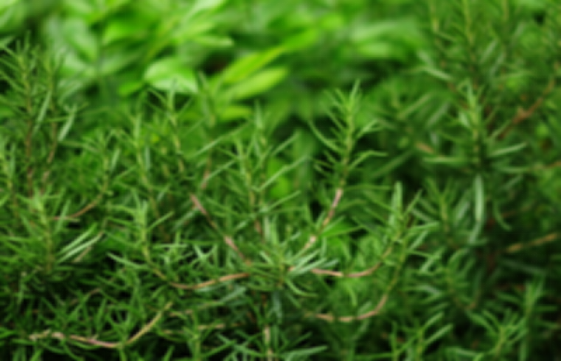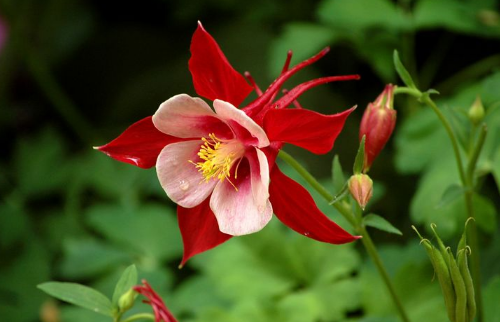Control of diseases and insect pests of Rosemary
1. Disease.
The common diseases of rosemary are root rot, gray mold and so on.
Prevention and control measures: Rosemary disease occurs mainly because the air environment is too humid, once the disease is found, it should be moved to the outside in time for ventilation and cool.
2. Insect pests.
The main pests of rosemary are red leaf mites and white whitefly.
Prevention and control methods: strengthen management, give priority to prevention, ensure reasonable watering and environmental temperature, timely management, once pests are found, catch by hand and spray to kill insects.

The above is the introduction of the breeding methods of rosemary, as well as the common problems and solutions of household breeding of rosemary. For more plant knowledge, please follow the four Seasons Plant Network.
How do you keep rosemary? 1. Light and temperature.
Rosemary likes a warm and suitable environment and can be planted all the year round in the south, while it is mostly used in pot farming in the north, which is conducive to moving indoors to keep warm in winter. Rosemary likes the sun and should be exposed to no less than 8 hours of sunlight every day. High temperatures in summer can be properly shaded.
2. Soil.
Rosemary is suitable for growing in alkaline soil, and some quicklime can be added to acidic soil to make the soil suitable for rosemary growth, and the stronger the alkaline soil is, the stronger the aroma of rosemary is.
3. Watering.
Rosemary is more resistant to drought, pay attention to dry watering, usually once every two days, thoroughly each time. Watering should be reduced in winter to enhance cold resistance and anti-freezing.
4. Fertilization.
Rosemary does not have high requirements for fertilizer, is more resistant to thin ridges, and general vanilla plants do not need fertilizer. During the growth period, appropriate amounts of nitrogen and phosphate fertilizer can be applied to promote growth.
5. Trim.
In order to maintain the shape of the potted plant, rosemary can be pruned three months after it has been planted. Generally, the branches that are too dense and too long are trimmed, and the withered branches are pruned in time, which can ensure ventilation and ventilation and make the plants grow healthily.
Above is the introduction of rosemary culture methods. The following editor will talk about the prevention and control of diseases and insect pests of rosemary in family care.
Ingenious control of flower diseases and insect pests by making use of the appearance of plants
No pesticide spray? Ecological planting? Organic vegetables? The use of plant Xiangke skillfully to treat diseases and insect pests, so what plant species together is the most important!
The strong smell of garlic keeps pests away, especially for the control of aphids and for bark beetles that eat rose bark.
Sage can prevent Pieris rapae from laying eggs on it and make carrots taste better. Can drive away harmful flying insects.
Basil can protect tomatoes from pests, promote growth and taste. It can also control whiteflies, flies and aphids.
Prawns and onions can promote the growth of legumes and make them taste better. It can also prevent melons and roses from getting sick and drive away pests.
Rosemary can not only improve the flavor of beans, but also prevent Pieris rapae and night larvae. It also has antibacterial activity.
Strawberries and rape plants and legumes are related to each other and have the effect of protecting them from rapeseed butterflies and night larvae.
Because pests and wild birds do not like the smell of lavender, it can protect plants and is also effective against nematodes.
The secretion of calendula can drive away the nematodes that cause root rot and prevent it from harming crops. It also works for whiteflies.
Also, it is important to remember that there are unlucky combinations that hinder growth? That's for sure!
1. Onion NOCs! Cabbage, beans
2. Fennel NOAA! Tomatoes and legumes
3. Raspberry NOAA! Potatoes, blackberries
4. Rosemary Nostoc! Potatoes, strawberries
5. Strawberries! Cabbage, thyme, mint, rosemary
- Prev

The Culture method of Rabdosia angustifolia
Potted soil to choose potted Douzi, you need to choose a slightly larger flowerpot and put the soil in the flowerpot, which can be sandy soil with good drainage or humus-rich soil, and a little base fertilizer needs to be added to the soil. Light and temperature Douzi likes a cool growing environment and is very resistant to cold.
- Next

Prevention and control of diseases and insect pests of saffron
1. Disease. The plants of saffron are strong, and there are few diseases and insect pests. But the summer weather is muggy, if the temperature is not cooled in time, lipstick flowers will suffer from anthrax. The main manifestation is that there are many small spots on the leaves, and then the spots expand into yellowish-brown round spots. During the serious period of the disease, large leaves blacken and dry up and die.
Related
- Fuxing push coffee new agricultural production and marketing class: lack of small-scale processing plants
- Jujube rice field leisure farm deep ploughing Yilan for five years to create a space for organic food and play
- Nongyu Farm-A trial of organic papaya for brave women with advanced technology
- Four points for attention in the prevention and control of diseases and insect pests of edible fungi
- How to add nutrient solution to Edible Fungi
- Is there any good way to control edible fungus mites?
- Open Inoculation Technology of Edible Fungi
- Is there any clever way to use fertilizer for edible fungus in winter?
- What agents are used to kill the pathogens of edible fungi in the mushroom shed?
- Rapid drying of Edible Fungi

